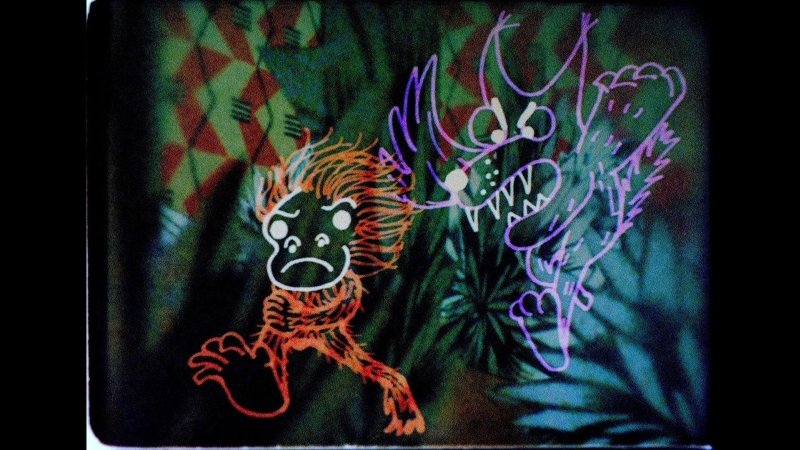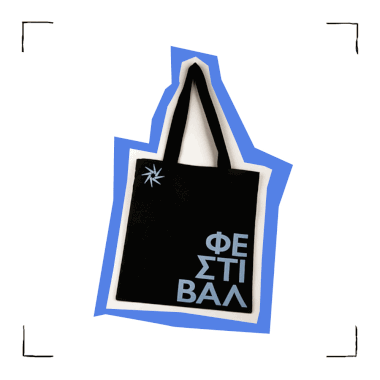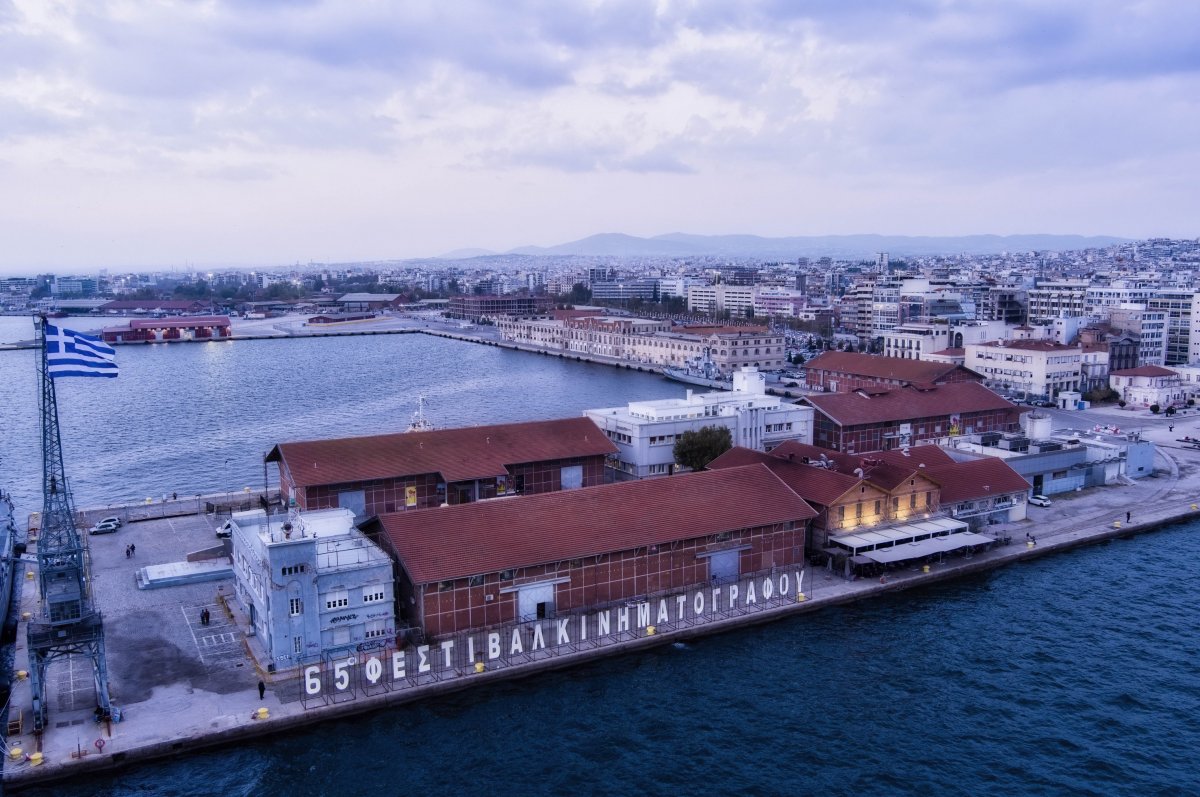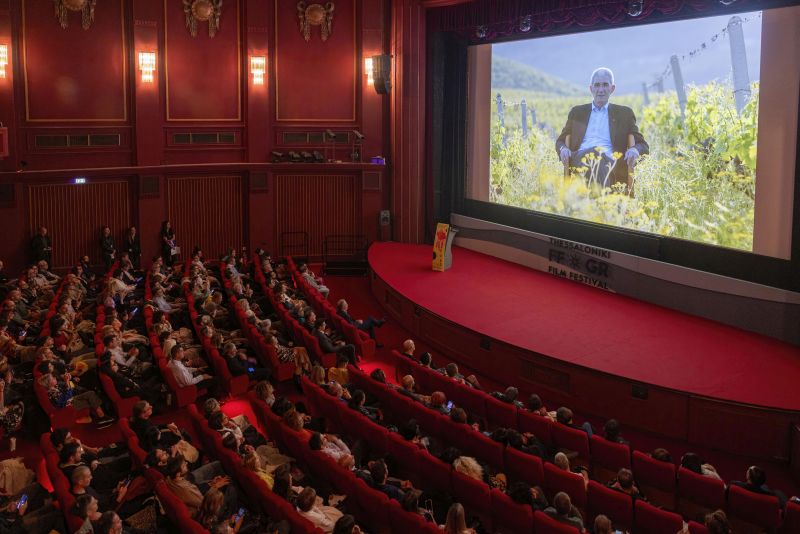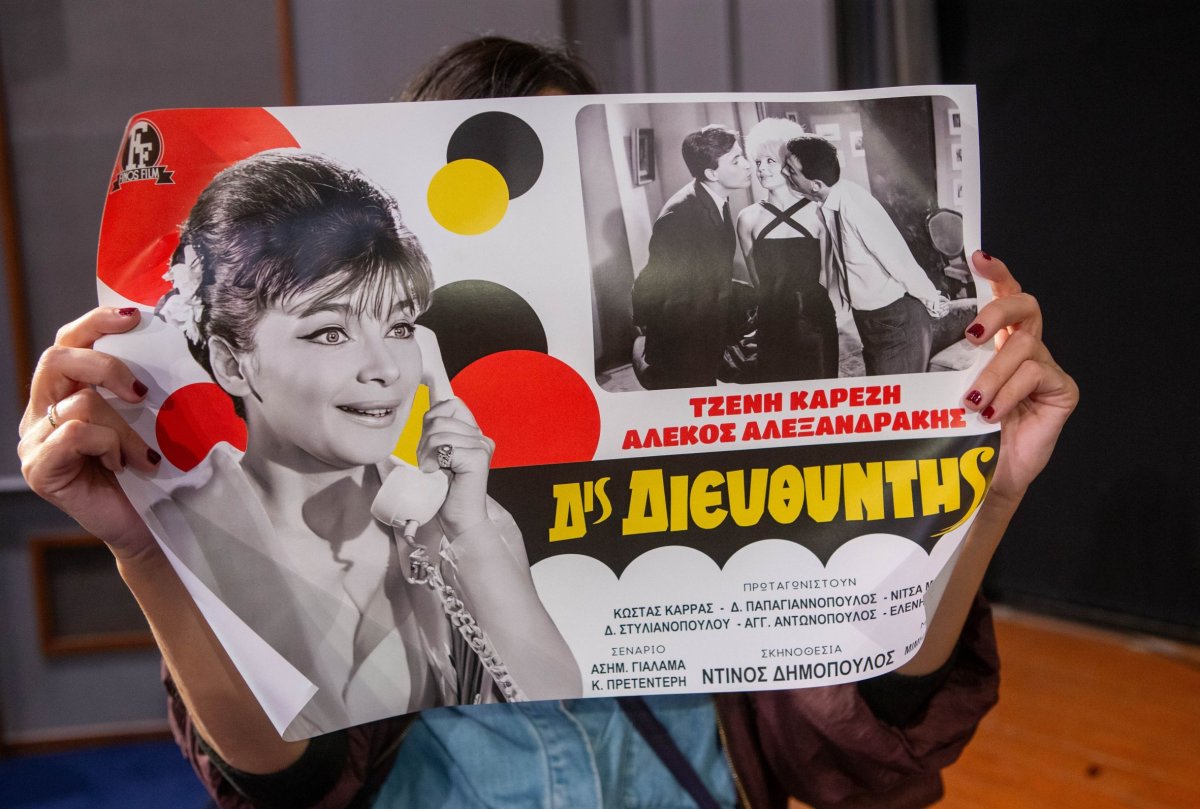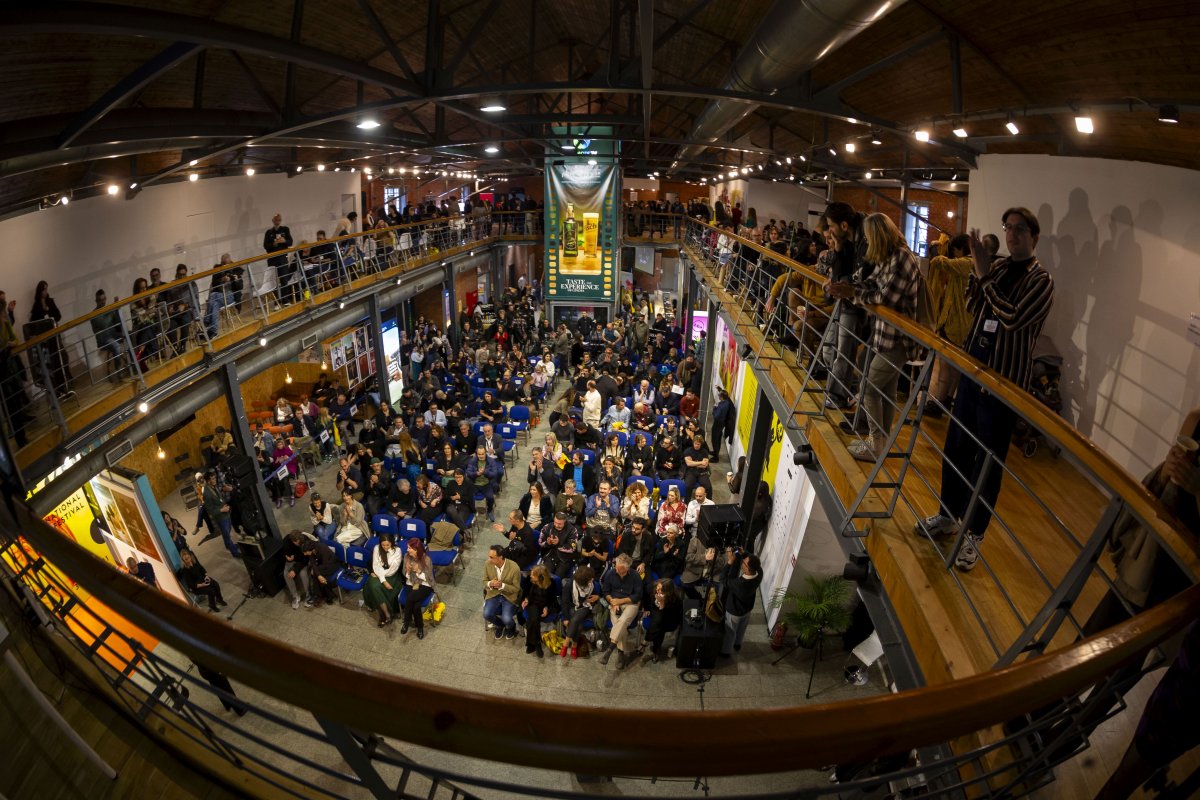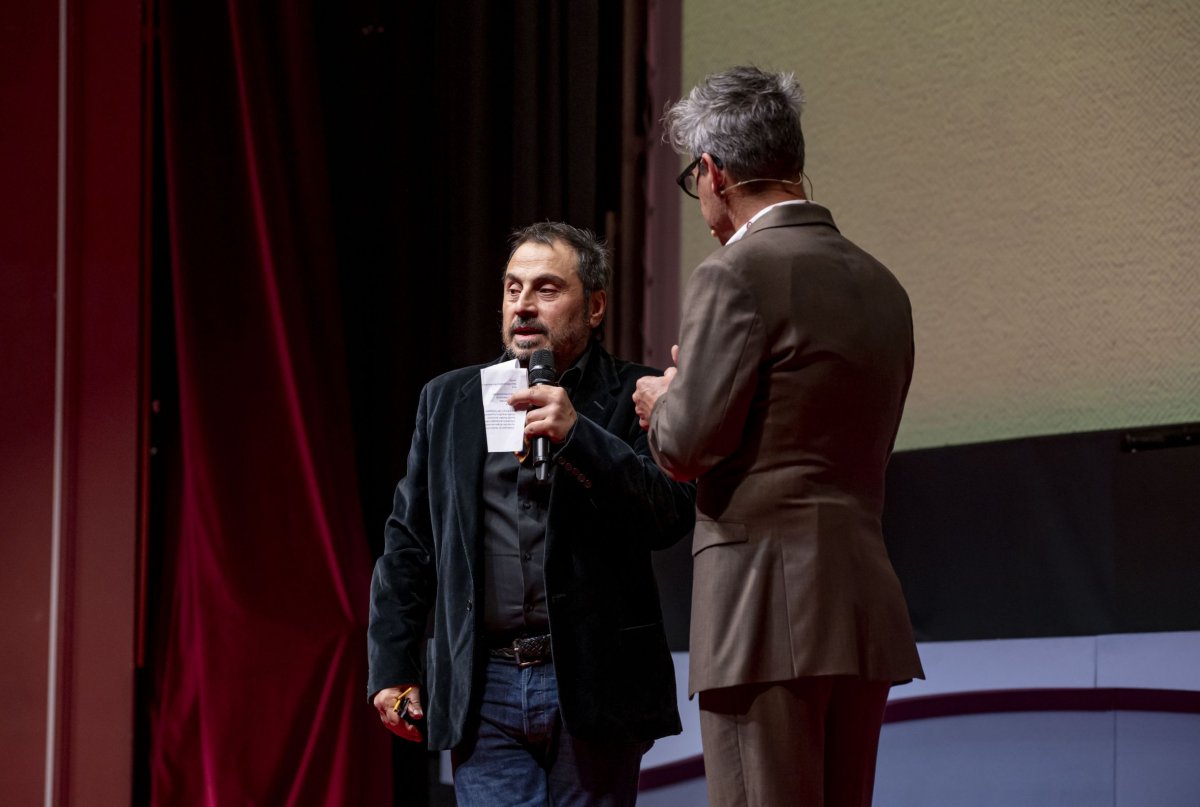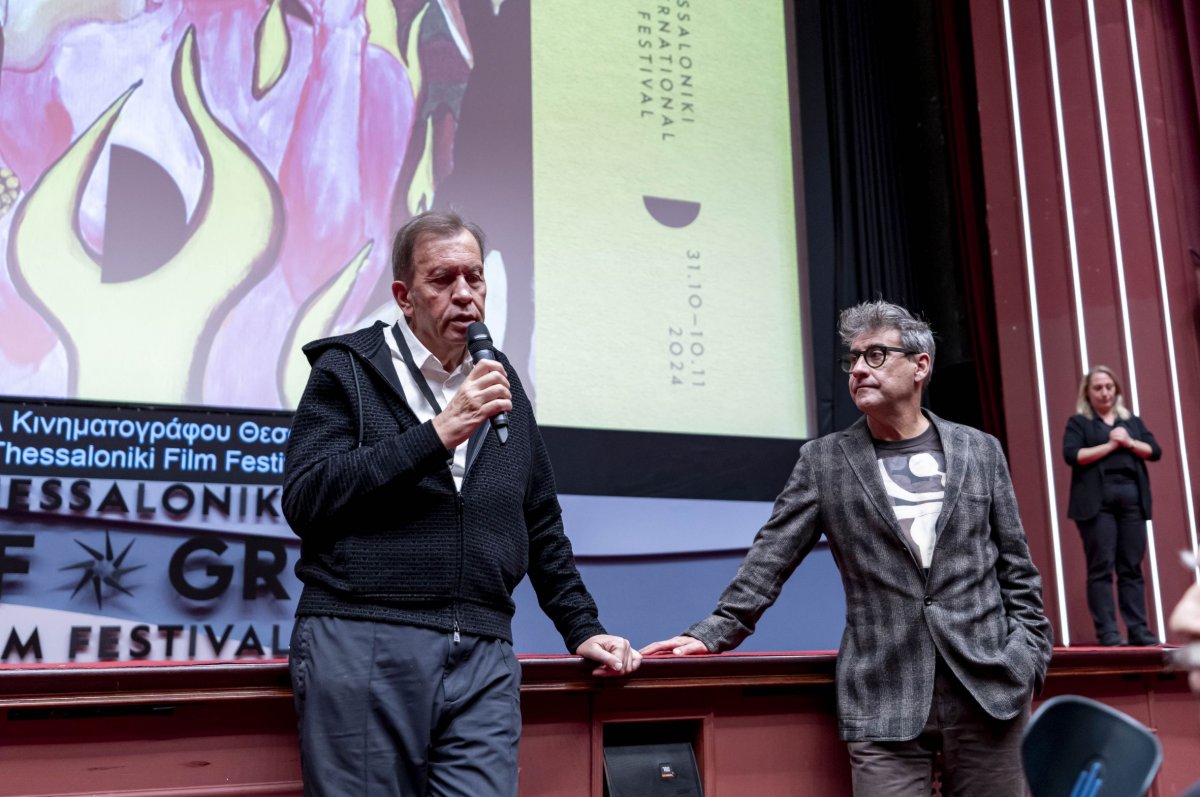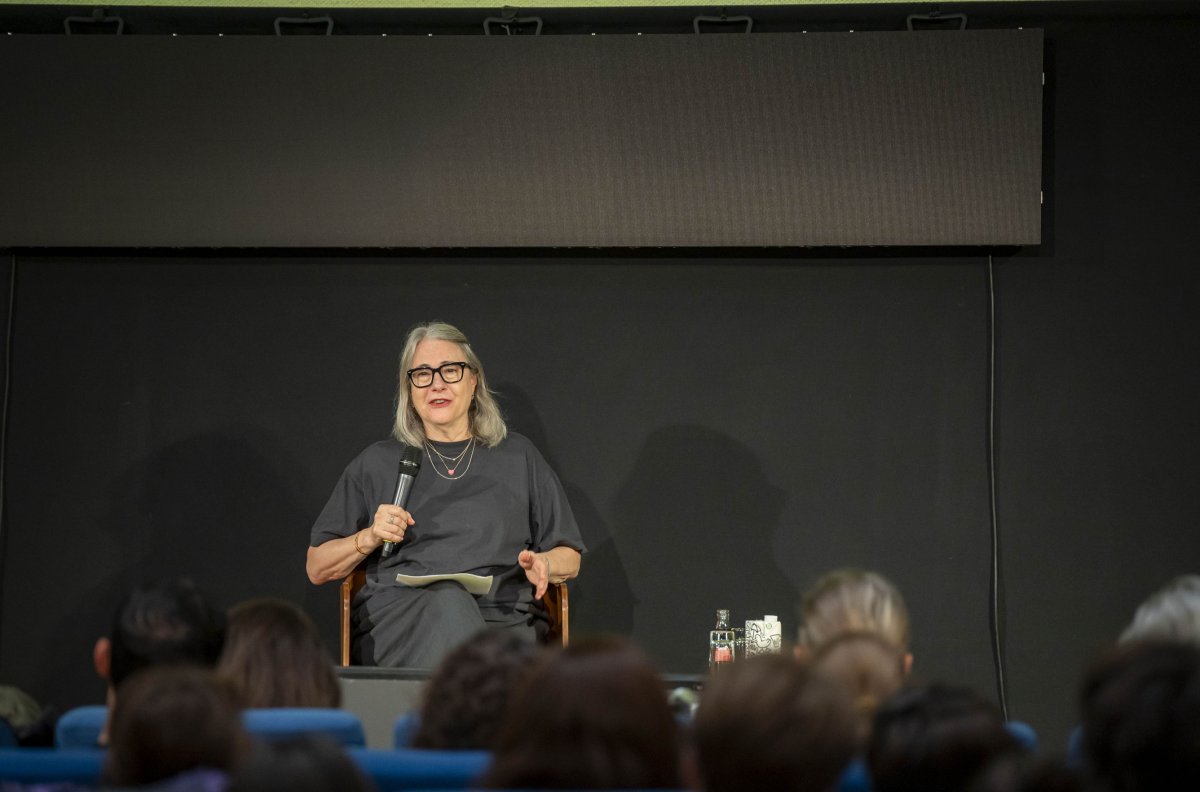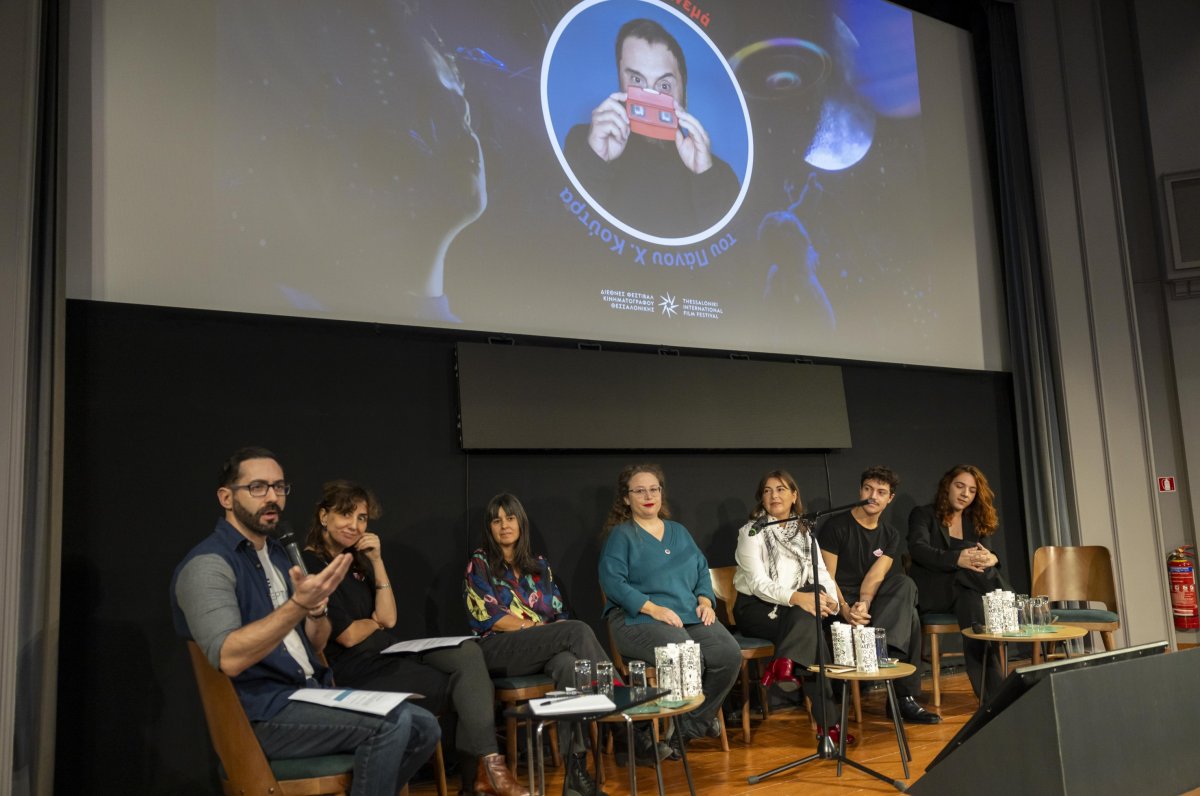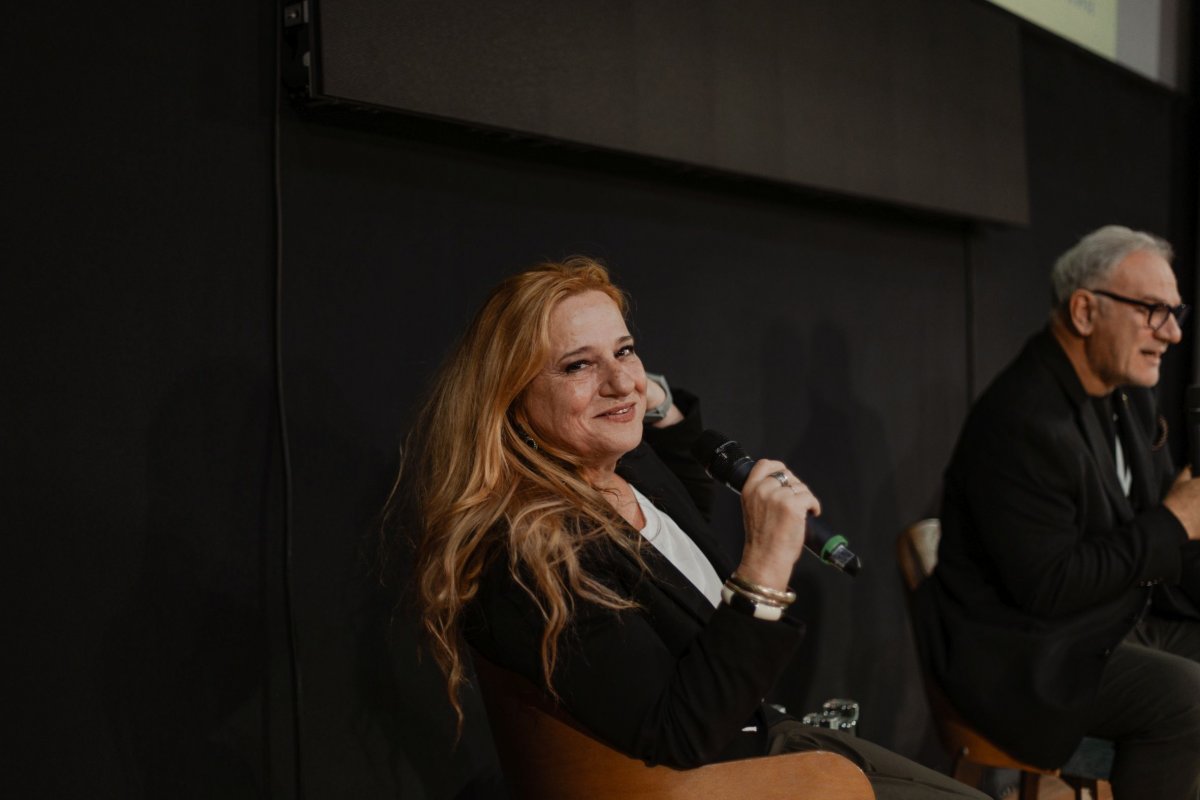22nd THESSALONIKI DOCUMENTARY FESTIVAL [19-28/5/2020]
A tribute to animated documentary
The 22nd Thessaloniki Documentary Festival (19 – 28/5/2020) presents an extensive tribute to animated documentary, a surprising hybrid sub-genre that has grown rapidly in the last few years.
The tribute includes a selection of short and feature animated documentaries and its aim is to bring out the use of animation as a tool for representation, showing the different functions and techniques.
Comedies, thrillers, portraits, contemporary narratives: Animated documentaries are as versatile as life itself. Animation offers creative freedom to directors, brings History to life and changes the art of documentary.
Chicago 10 by Brett Morgen, 2007, USA, 110΄
Documentary film director Brett Morgen skillfully combines narration, animation and archival footage to tell the story of the protesters who participated in the demonstrations during the Democratic Convention of 1969 and clashed with police forces, ending up in trial. They are now known as the Chicago 8 and their experience comes to life in the multifaceted film, the Chicago 10.
Crulic: The Path to Beyond by Anca Damian, 2011, Romania-Poland, 73΄
The animated documentary feature-length Crulic – The Path to Beyond tells the story of the life of Crulic, a 33-year-old Romanian who died in a Polish prison while on hunger strike. The acclaimed Romanian actor, Vlad Ivanov, narrates Crulic’s ironic voice over from beyond the grave. A strong visual style, the result of beautiful hand drawn, collage, stop-motion and cut-out animation techniques, blend to create a striking, surprisingly integrated and memorable film.
Is the Man Who Is Tall Happy?: An Animated Conversation with Noam Chomsky by Michel Gondry, 2013, France, 88΄
An unlikely pairing of form and style, Michel Gondry’s animated documentary successfully gives Noam Chomsky’s philosophical musings an expressive canvas with a delightfully anarchic animation style. The film’s real topic is the elusive nature of all thought processes, and it effectively shares the dual speakers’ collective journey without revealing any tangible destination. The movie ends, but the discussion resonates indefinitely.
The Wanted 18 by Amer Shomali and Paul Cowan, 2014, Canada-Palestine-France, 75΄
This feature film incorporates live action footage with animation to tell the curious story of 18 cows. Acquired by a Palestinian community in the late 1980s, the cows were a symbol of freedom and resistance, providing milk for the Palestinian residents of Beit Sahour so that they would not rely on Israeli producers. Soon the illegal cows, cherished by the Palestinians, were being sought by the Israeli army as a threat to security. With humor and passion, the film captures the spirit of the 1987 uprising through the personal experiences of those who lived it.
Nuts! By Penny Lane, 2016, USA, 79΄
Inventive and wildly fun, the film recounts the mostly-true story of John Romulus Brinkley, a Kansas doctor who in 1917 discovered that he could cure impotence by transplanting goat testicles into men. Mixing hand-drawn animated reenactments, interviews, archival footage, and a highly unreliable narrator, Nuts! traces Brinkley’s rise from poverty and obscurity to the heights of celebrity, wealth, and influence. Nuts! lives up to its title in the best way, offering a delightfully unorthodox look at a bizarre – and largely unexplored – chapter in American history.
Tower by Keith Maitland, USA, 2016, 82΄
On August 1st, 1966, a sniper rode the elevator to the top floor of the University of Texas Tower and opened fire, holding the campus hostage for 96 minutes. When the gunshots were finally silenced, the toll included 16 dead, three dozen wounded, and a shaken nation left trying to understand. Combining archival footage with animation in a dynamic, never-before-seen way, Tower reveals the action-packed untold stories of the witnesses, heroes and survivors of America’s first mass school shooting, when the worst in one man brought out the best in so many others.
Another Day of Life by Raul de la Fuente and Damian Nenow, Poland-Spain-Belgium-Germany-Hungary, 2018, 86΄
Angola, 1975. A bloody civil war breaks out on the eve of the country's independence. Polish reporter Ryszard Kapuscinski embarks on a seemingly suicidal road trip into the heart of the civil war. There, he witnesses the dirty reality of war and realizes the power and ambiguity of his role as a journalist. This experience changes him forever, a reporter travelled to Angola but a writer returns.
Chris the Swiss by Anja Kofmel, 2018, Switzerland-Croatia-Germany-Finland, 90΄
Croatia, January 1992. In the midst of the Yugoslav Wars, Chris, a young Swiss journalist is found dead in mysterious circumstances. He was wearing the uniform of an international mercenary group. Anja Kofmel was his cousin. As a little girl, she used to admire this handsome young man; now a grown-up woman, she decides to investigate his story, trying to understand what really was the involvement of Chris in the conflict…
The Book of the Sea by Aleksei Vakrushev, 2018, Russia, 85΄
Inuit and Chukchi hunters set out to the waters of Russia’s Bering Strait, looking for the giant sea mammals that have been sustaining their people for years and years. Real life meets myth to narrate the contemporary story of elders Alexander and Alexei, a story that interweaves with that of “the woman who gave birth to a whale” and other ancient myths, told here in vivid animation. A spectacular cinematic story about the struggle for survival, as well as the preservation of the ancient Arctic culture and traditions.
Documentary Shorts:
The Sinking of the Lusitania by Winsor McCay, 1918, USA, 12΄
Outraged for the lack of coverage and publicity attributed to the sinking of British ocean liner Lusitania caused by German troops in 1915, American cartoonist Winsor McCay recreates the tragic event in this short documentary that took 22 months to complete. Trying to do justice to the men who died, some of whom were American, McCay rebels against the anti-war and anti-US involvement policy of the newspaper where he worked, Hearst, and produced this propagandistic piece that is still valued for its cultural and artistic significance.
So Much for So Little by Chuck Jones, 1949, USA, 11΄
Oscar-winning So Much for So Little came out during the Truman Era in the US to inform, or perhaps to even startle the people about the problematic structure of the public health care system. Unfortunately, the documentary remains relevant today, more than 60 years later, and thus deserves to resurface as it touches upon the importance of treating public health as a basic human right instead of a privilege for the few.
Neighbors by Norman McClaren, 1952, Canada, 8΄
Canadian Norman McClaren’s Neighbors is an anti-war animated short that portrays the deadly rivalry between two men who live opposite one another. Vainly but symbolically, the men fight obsessively over the only flower that blooms between their houses. Interestingly enough, the film had to undergo editing that would make it easier for audiences to digest, without however surrendering its highly controversial nature and ending up receiving an Academy Award.
His Mother's Voice by Dennis Tupicoff, 1997, Australia, 15΄
What can a mother say when her son is violently taken away from her? Dennis Tupicoff’s endeavor answers the question – twice. Matthew Easdale was shot dead in a house in Brisbane in April, 1995. His mother, Kathy Easdale, was interviewed for ABC Radio a few weeks later. Using the original radio interview, the film presents the account in two very different ways, showcasing the power of storytelling to deal with trauma: an intimate exploration of the deepest abyss of human soul.
Survivors by Sheila Sofian, 1997, USA, 16΄
With images that are sometimes abstract or vividly representational, this animated documentary is based on interviews with victims of domestic violence who bravely recount their brutal histories, and, with the help of counselors, take their first steps towards healing.
Grasshopper by Bob Sabiston, 2003, USA, 15΄
In Grasshopper, park-bench philosopher AJ Vadehra expounds on astrology and more productive avenues of contemplation. This animated but otherwise unedited fifteen-minute interview film is a good example of what happens when you approach the right stranger with a camera. From the animators of Waking Life.
Ryan by Chris Landreth, 2004, Canada, 14΄
This Oscar®-winning animated short from Chris Landreth is based on the life of Ryan Larkin, a Canadian animator who produced some of the most influential animated films of his time. Ryan is living every artist’s worst nightmare - succumbing to addiction, panhandling on the streets to make ends meet. Through computer-generated characters, Landreth interviews the animator to shed light on his downward spiral, while projecting his own insecurities.
Never Like the First Time by Jonas Odell, 2006, Sweden, 15΄
Four different people tell, in their own words, what it was like to lose their virginity. The diverse experiences recounted in the four different animated stories, some tragic and some comic, are told by both the teenagers and the old people that appear in the stories and they all have one thing in common – it is “never like the first time!”.
I Met the Walrus by Josh Raskin, 2007, USA, 5΄
I Met the Walrus presents an animated recreation of the iconic interview between then-14-year-old Jerry Levitan and John Lennon, who engaged in a conversation of approximately 30 minutes about the political state of the 1960s and, of course, the Beatles. The short received multiple awards worldwide and an Oscar nomination for Best Animated Short Film.
Slaves – an animated documentary by Hanna Heilborn and David Aronowitsch, 2008, Sweden-Norway-Denmark, 15΄
Abuk and Machiek are two out of thousands of children captured by the government-sponsored militia during the Civil War in Sudan. In Slaves – an animated documentary, they talk about their experiences from the day they were captured, until the moment they’re released by James Auger Alic and his organisation CEAWC (Committee of Eradication of Abduction of Women and Children).
Madagascar, carnet de voyage by Bastien Dubois, 2010, Fiji-France, 12΄
Told in the form of a travel notebook, the story follows the steps of a Western traveller who is brought face to face with the Malagasy customs and rituals, especially the Famadihana, the ritual of the turning of the bones. The pages turn, the drawings come to life, and the luxuriant landscapes of Madagascar appear one after another. The celebrations may commence… The jumble of sketches and images across multiple styles, recreate that sometimes overwhelming sense of being fully present and stimulated that one gets when placed in such a rich, yet foreign environment.
Lipsett Diaries by Theodore Ushev, 2010, Canada, 14΄
A descent into the maelstrom of anguish that tormented famed Canadian experimental filmmaker Arthur Lipsett, who died prematurely at age 49. Taking the form of a diary, this animated film charts the meanderings of psychological distress, with clashes of images and sounds evoking the loneliness of the artist’s childhood, his frenzied creations and his dizzying fall into depression and madness. The result is both spectacular and daring: a fragmented and fascinating short film that plunges us into the whirlwind of a mind out of balance – a singular study of what happens when genius is on first-name terms with madness…
30%: Women and Politics in Sierra Leone by Anna Cady and Em Cooper, 2013, UK-Sierra Leone, 11΄
The story of the ten-year battle to achieve fair representation for women in the governance of Sierra Leone is revealed by three women from diverse backgrounds. Bernadette Lahai, Salamatu Kamara and Barbara Bangura share their stories of the ‘road blocks’ women face within the world of politics in Sierra Leone. Em Cooper’s exquisite oil painted on glass animation combined with live action video transforms issues of gender and politics into compelling and thought-provoking viewing.
Nowhere Line: Voices from Manus Island by Lukas Schrant, 2015, Australia, 15΄
The animated short documentary tells the stories of two men, currently detained in Australia’s notorious Manus Island Offshore Processing Centre. In October 2014, director Lukas Schrank made phone contact with the men, who were able to tell their stories from within the compound. Their interviews offer a chilling insight into the reality of life for the 2000 people currently being held in Australia’s offshore detention centres. Their stories are the voice of the film, guiding the animation deep into the fenced facility of the Manus Island Regional Processing Centre.
The Driver is Red by Randal Christopher, USA, 2017, 15΄
Set in Argentina 1960, The Driver Is Red is a true crime documentary that follows the story of secret agent Zvi Aharoni as he searches for one of the highest-ranking Nazi war criminals on the run, Adolf Eichmann.
Flesh by Camila Kater, Brazil-Spain, 2019, 12΄
Flesh is about how women are seen as bodies for disposal, judged as time passes as meat cooking stages. Through the form and texture of real materials such as paint, watercolor, clay, 35mm film and virtual image decomposition such as glitches and datamosh, five women are represented in animation by women animators to highlight the perverse way in which society looks at them.
Diolkos 1500 Years by Theodosis Tasios, Greece, 2009, 22΄
A journey back to Ancient Greece and specifically to Ancient Corinthia. There, during the 6th century BC, the construction of diolkos begins and becomes completed, uniting the Corinthian with the Saronic bay and facilitating transportation, trading and thus the economy. The film follows a boat as it travels through this route for days, inviting us into the world and habits of the Ancient Greeks while simultaneously explaining the technical function of diolkos and other ancient devices. In 2013 the Central Archeological Board officially approved the study and recovery of the diolkos, to which professor and creator of the film, Theodosis Tasios, actively participated.
The Restoration History of the Erechtheion by Dimitris Patrikios, Greece, 2010, 16’ 16΄
This 3D documentary focuses on a unique and extremely holy part of the Acropolis, the Erechtheion. As centuries went by, the monument was destroyed, restored, altered and these multiple changes it underwent become apparent in the stereoscopic film that even touches upon the latest interventions initiated by the Ministry of Culture.
Tokei Maru by Zachos Samoladas, Greece, 2018, 15΄
Zachos Samoladas uses colorful pencils to draw the story of the Japanese trade ship Tokei Maru, whose captain rescues approximately 800 Greek and Armenian refugees as they were trying to survive the Great Fire of Smyrna in 1922, without hesitation and with the risk of self-sacrifice. A mesmerizing soundtrack “falls” on the sketches, and along with the narration a traditional but relevant, moving animated comes to life.


